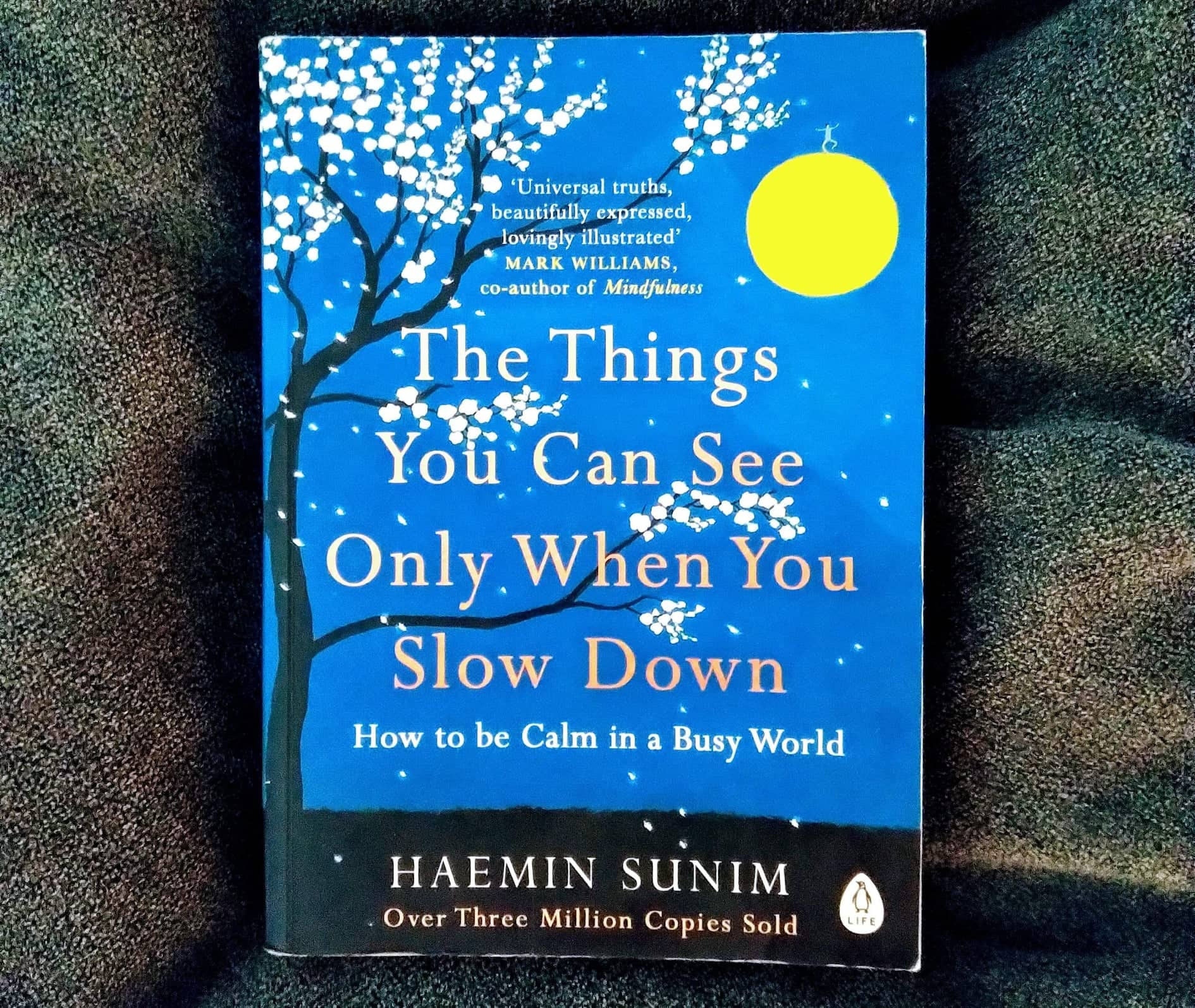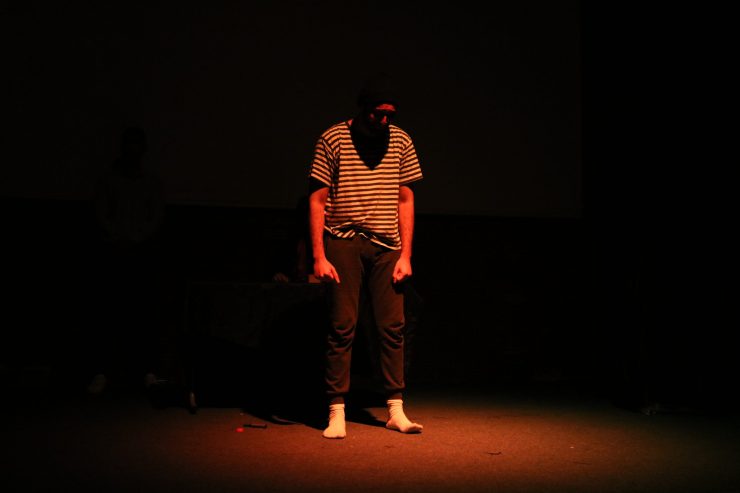Review
Review | The Things You Can See Only When You Slow Down
Published
6 ans agoon
[simplicity-save-for-later]
This is a book like no other. If I were to choose a category for « The Things You Can See Only When You Slow Down », I would put it somewhere between Self-Help, Education and Autobiography. One thing is guaranteed: the book will take you on a trip within You, on an unprecedented journey of self discovery.
In a nutshell, Haemin Sunim, « one of the most influential Zen Buddhist teachers and writers in the world » from Korea, explains how to be calm in a busy world. He does it not by telling a story, not by sharing the teachings he got during his years of formal monastic training at the Haein monastery in South Korea, neither by narrating his own experiences in life, nor by asking the reader questions that prove that he went through the same thing you are probably going through now. Rather, he did it all.
Chapter Eight :Spirituality, page 248, Haemin suggests: « Faith is overvalued while practice is undervalued. If we emphasize faith over practice, spirituality remains ideology, creating theological conflicts. But if we focus in carrying out the teachings in our actual lives, we realize that the love taught by Jesus is no different from the compassion taught by Buddha. If you wish for peace among different spiritual paths, then practice what you preach. »
Turn the page backwards, and you’ll find one of the lines of wisdom that captivated me the most:
« We must cultivate all three intelligences for our overall health: critical intelligence, emotional intelligence, and spiritual intelligence. If one falls to the wayside, it slows the growth of the other two. » He goes on to explain that « If you have developed critical intelligence but neglected emotional intelligence, then you may not be sensitive to the suffering of others. If you have developed emotional intelligence but neglected spiritual intelligence, then you may lose hope after seeing the world’s suffering. If you have developed spiritual intelligence but neglected critical intelligence, then you may fall victim to the abuse of a cult. »
On a literature note, the book is an easy (and quick) read, despite being seemingly lengthy. The style is light, elegant and deep. The author seems to follow the golden rule of Few Words, Extraordinary Wisdom. Yet, you will definitely feel, as you read, that most of it is already known to you. The book, in this regards, serves as a reminder of what is essential in life. Tranquility, peace of mind, softness are among the basics of well-being that you might want to revive in you while enduring in a busy world.
The book has eight chapters. Starting from Rest, ending with Spirituality, going through Mindfulness, Passion, Love, … When I first started reading, I decided that it would be only on my bed, before sleeping. The title and the author made me expect a book that will help me feel calm and relaxed. I looked for the right state of mind that will make it easier for me to fall asleep, maybe even help me have a better night sleep. In this regard, Haemin Sunim did a great job in writing a book that truly speaks to people who have a busy life, live in stressful environments, or need to manage many things at once. All these make one’s mind crave for rest, whether when it’s time to go to bed, or during the weekends and the holidays ».
« How to rest? » might then be a real challenge. The solution, according to Haemin Sunim, lies in a good management of emotions, coupled with a savoir-faire when it comes to relationships (or how to deal with others) and knowledge of the true inner self. This is all what this book is about.
Throughout the early chapters of the book, there is a clear invitation from the author to be mindful about the ‘observer’ that lies within each of us. There is a warm invitation, at times of calamities, to retreat from the ocean of negative emotions surrounding us, and « Observe the changing energy both attentively and lovingly as it unfolds in the space of your mind. » I smiled widely when I later read: « Do not fight your negative emotions. Observe and befriend them. » As easy as it may sound, putting these wise words into practice is ultimately what the monks in Haein monastery and other cult places around the world are being trained to master. It is also one of the main calls of monodeist beliefs, for it is indeed oneself (and the turmoil of changing thoughts and emotions) that it is the most challenging to deal with.
By now, you might be telling yourself that this book is too theoretical, that the teachings you will find are perhaps too perfect to be effective in the real world. Well, try this « Do memories cause you pain? Practice being in the present moment. Turn your attention to the here and now. Notice that your thoughts subside when you focus on the present. As your thoughts quiet, so, too, the memories. Because memories are, in essence, thoughts. » and this: « If you would like to sleep more peacefully, as you lay your head on your pillow, think of the people whom you are grateful to, or the times you helped others and felt good about yourself. It will warm your heart, gifting you with more peaceful sleep. » How about this: « Do you feel unsettled or depressed? Then look at a child »s sleeping face for one minute. You will soon feel ripples of peace. »
To conclude, I would also like to point out that this book, in its most popular Penguin Books Edition, has been made colorful and pleasant to read thanks to the paintings of Young-Cheol Lee, a Korean artist with an admirable simple style, that you can peacefully discover here.
Articles similaires
Ahmed Anis is an aerospace engineer graduated from The Hong Kong University of Science and Technology (HKUST). After his graduation from Lycée Pilote de l'Ariana, he joined INSAT where he enrolled in the engineering preparation cycle and wrote for INSAT Press as a guest writer. He worked part-time at the Association of Pacific Rim Universities (APRU) while finishing his studies at HKUST. Passionate about data science and machine learning in industrial applications, among many other things in life: Travel, food, piano, etc.

You may like
Events
JTI The Fourth Dimension: Jokes Till Idleness
Published
5 ans agoon
11 avril 2021 [simplicity-save-for-later]
Overview
April 7th, 2021: the most awaited date here at INSAT for the fifth JTI edition organized by the « THEATRO INSAT ».
In these new theatrical pieces, the club chose to preserve the same concept: a group of plays with musical breaks and the same fine thread that all of these sketches have in common. However, since the last edition of JTI, the world has faced so many changes due to the coronavirus pandemic that turned it into a flophouse.
The audience’s high expectations are completely natural as the past events were an utter success, since the first edition of 2017.
This even explains why this year’s event was announced as ‘sold out’ two days after the start of the selling.
JTI: A flashback to the last decade
« Freedom » is the overall theme discussed and shown throughout the three performed plays, it is what most of the characters longed for: the chance to breathe, the chance to see what’s beyond, and to break the political chains imposed by society. But how can these one-dimensional[1] characters convey this ideal?
The event kicks off with the storyteller style, a history professor lecturing his student while chewing on the same consumed jokes. That’s how our story initially begins.
1st piece: Bay al-Hana
Bay Al-Hana was a political statement evidently which aimed to address the issues of freedom throughout Tunisian history, showing the juxtaposition between what was politically present back at that time and the hope that the population, presented in the character of Hsine primarily, had for the better tomorrow.
The play starts with the bay and his second wife talking about the future of the kingdom and its heir, in a dialogue breaking mostly the fourth wall between the audience and the characters, acknowledging their own inexistence but mostly filled with cliché jokes and sexual overtones that made it feel like a deja vu moment during the performance. The same pace continued with the same lousy writing and dialogue that even with the outstanding performance by the whole crew couldn’t overlook its downfalls in the middle of the piece making it lose its charm which made the audience disorientated from the longevity of the play.
Bay al-Hana was an exceptional piece that touched the core of the Tunisian society’s contradictions and habits, politically and ethically, showing the unchanging traits that still exist nowadays through a writing style that made the old characters speak modern words; This was accurately seen through Fatma’s monologue when she was brought forcibly to the Bay and in an emotional scene built by the effect of the lighting and the right music, the delivered speech was able to convey the real emotions and pain that the character felt back then.
Adding to that, the amazing lights, the beautiful sound, and the outstanding performance by the actors contributed to the development of Hsin’s character in the following sketches and gave the audience the opportunity to challenge their minds over the theme.

2nd piece: a political prisoner
This piece is complex since it contains more than just one story inside its twists and turns. Despite its primary focus on Hsin’s character, it also shone the light over the other characters in the play, giving them enough time and space to express themselves which adds to the story told from Hsin’s point of view.
The story is happening in prison, where Hsin is being tortured every now and then by the dictatorship’s police officers over a past expressed opinion until a final verdict gets published. Thanks to the intense performance of the actor playing Hsin’s role, we could sense the melodrama around the story and the pain felt by the character, along with the painful eagerness of that unfed hope mentioned in the first play. Hsin encounters throughout his time in prison a religious man, a criminal who killed his pregnant wife and a young student. Yet only the young man was put under the spotlight. Because of one « alleged » mistake, this character lost his future due to the political system’s injustice. This side-character evoked a very controversial topic inspired by the events that occurred a couple of months ago.
The last part of this piece started with a mediocre and lackluster scene to the story about Hsan and his wife only to end with the highlight performance of the evening through Hsin’s emotional heartbreaking monologue that took the audience to that extra mile of vulnerability.
Despite the system’s unfairness, Hsin’s loyalty to his country covered the missteps and misconceptions of the whole play.

3rd piece: chismha mart il thour
« What’s it called the wife of the bull » is the last piece of the event, not the most emotional nor the funniest but the most original as it presents a new concept foreseeing the future situation of the Tunisian people after the destruction covid-19 left.
Despite its promising premise, this play only felt the most rushed, muddled, tedious, and uninspired, as it never coalesces into a meaningful story neither about the loss of fertility nor about the revolution nor why it was happening in the first place.
Shout out to the actor Mohamed Elyes who carried this whole piece on his shoulder through his spectacular acting and delivery of lines. Thanks to his strong sense of humor, he was more than able to pull the whole piece off and sail it safe to the shore.
The story tells how fertile men became rare species. They were abused and needed to break away from their misery and suffering in order to find their own identity and freedom in a world filled with hypocrisy and materialistic exploitation of the human race.

Conclusion
Around a year ago, covid-19’s outbreak isolated billions of people and killed millions of them, and thus, changed their lives. After such a major event, using the virus in dirty jokes is simply immature. That’s why the last decade is haunting us back until we learn that the times have changed and we surrender this mentality of cheap laughs.
To conclude, I just want to thank every member of « Theatro INSAT » for the great work they’ve done and their beautiful performance in front of a live audience.
Also, I’d like to highlight the fact that the directorial view was obvious from the start revealing the well-crafted plot and the thread that connects all the dots together. All in all, it pinpoints the effort, sweat, tears, and huge amount of love this edition was made of.
[1] lacking in depth and development.



Share your thoughts